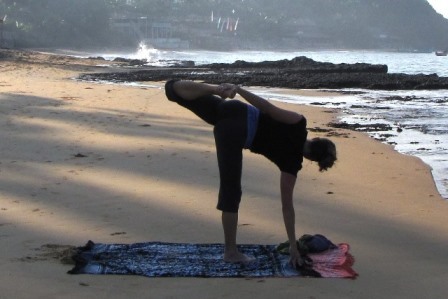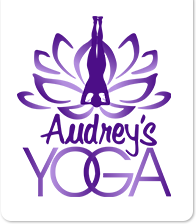How Much Yoga will Help Me…

In my classes I often have students ask, "How much yoga should I do to -----?” (to see results, to lose weight, to become flexible, to be able to do that fancy balancing pose). Many who are new to yoga expect it to be a path to an end, and that is totally okay as a motivation to get started. We all need motivation to start something. However, I urge my students to not rely only on the endgame for motivation in yoga, as I have seen students get discouraged.
People who practice yoga once or twice a week to lose weight (or do a headstand, or touch their toes…) can easily become disappointed. Expecting drastic advances in your physical ability only practicing once or twice a week is unrealistic. Those who develop a more regular 4-5 times a week practice come to understand that yoga is not a quick answer to a fitness goal but rather part of their daily life as they continue on their own journey.
When I started yoga I wanted to become more flexible, to hold headstand for more than 5 agonizing breaths, to lose weight and look like all the other yogis in my classes. And I wanted it fast. Practicing yoga 1-2 times a week was not getting me the results I craved, so I decided to started attending Ashtanga style classes 3-4 times a week.
For six months I struggled through soreness, fatigue, and frustration 3 days a week (plus weekend workshops!), but still I did not see results. I finally asked my instructor why I was not seeing any changes. She replied that I was doing yoga rather than practicing yoga. I was trying too hard to force my body into the poses, rather than letting the poses happen when my body was ready for them. The beauty of the Ashtanga practice is that it is a set sequence to allow the body, breath, and mind to link and move through the practice as one. She encouraged me to take the next month to practice being in the pose, each pose, rather than getting into each pose and see what happens with my practice.
I was surprised by her response because I thought I was practicing yoga, besides what was the difference between doing and practicing? I was skeptical, but willing to give it a try. For the next month I went to classes and tried to just move through the practice, letting my breath rather than my mind, guide me. It took some time, but I started to notice places in my practice when I was pushing too hard and losing the connection with my breath. I was better able to come back to my breath and let my body be in the pose. By the end of the month, I had learned to let my breath guide my practice. The best part to this consistent and mindful practice was that I was finally practicing yoga and I was feeling stronger, more flexible, and thinking more clearly.
So in the end, I urge you, show up to your mat to practice yoga rather than do it. Practice as much as you have time for; 10 minutes, 20 minutes, 1.5 hours, whatever fits into your day, but try to make it consistent. If you do miss a day, don’t stress over it, life happens. Make a yoga practice your priority and intention for the next day. As the Ashtanga guru, Shri K. Patthabi Jois, would say “Practice and all is coming.”
Yoga is a practice, not an endgame. We show up each day to our mats, do what we can, learn what we need (both on and off the mat), and repeat as we continue on our journeys. Enjoy your journey, one day at a time. Namaste’




